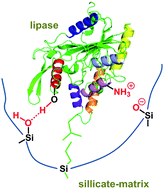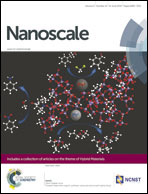Increasing the activity and enantioselectivity of lipases by sol–gel immobilization: further advancements of practical interest†
Abstract
The entrapment of lipases in hydrophobic silicate matrices formed by sol–gel mediated hydrolysis of RSi(OCH3)3/Si(OCH3)4 as originally reported in 1996 has been improved over the years by a number of modifications. In the production of second-generation sol–gel lipase immobilizates, a variety of additives during the sol–gel process leads to increased activity and enhanced stereoselectivity in esterifying kinetic resolution. Recent advances in this type of lipase immobilization are reviewed here, in addition to new results regarding the sol–gel entrapment of the lipase from Burkholderia cepacia. It constitutes an excellent heterogeneous biocatalyst in the acylating kinetic resolution of two synthetically and industrially important chiral alcohols, rac-sulcatol and rac-trans-2-methoxycyclohexanol. The observation that the catalyst can be used 10 times in recycling experiments without losing its significant activity or enantioselectivity demonstrates the practical viability of the sol–gel approach.

- This article is part of the themed collection: 2014 Hybrid Materials

 Please wait while we load your content...
Please wait while we load your content...